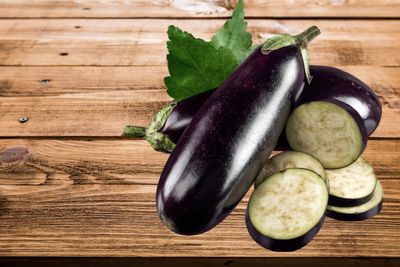What is an Italian Eggplant?
Many varieties of eggplant are available, with the Italian type often used for popular culinary dishes. There is one called Baby eggplant, more tender and tasty than most others. Eggplant Parmesan is a classic for Italian eggplant uses, along with a favorite dish called Eggplant Rollatini and one called Caponata. Some Italian types are larger and provide a substantial amount of meat (what the edible part is called). There are early, mid-season, and late producers. There are white ones, purple ones, and some with striped or mottled skin. Most have a roundish or irregular fat shape, but Lunga Violetta is cylindrical and thin, shaped almost like a pepper. The skin is deep purple and the meat is a creamy color, tasting nutty and rich. It is an heirloom variety and grows in the garden in USDA zone 5 and all the way south. Eggplant is good for you. It contains the flavanoid anthocyanin, the plant pigment that makes blueberries blue and helps make them a super-food. Foods containing anthocyanin often lower blood pressure significantly and possibly even prevent cancer. Italian eggplant contains Vitamin C and B6 along with potassium and fiber.
Italian Eggplant Growing
These plants need conditions similar to those provided for tomatoes and peppers. Eggplant is a vining plant, often producing a dozen fruits per vine. If you limit the fruits by pinching out growing points, those left will be bigger with the plant’s energy directed to them. Italian eggplants need staking, so locate a sturdy stake or cage early on for each plant before fruits form. Plant seedlings in the sunny garden when the soil has warmed. You may purchase seedlings or start plants from seed indoors for the best Italian eggplant variety selection. Especially in areas with short growing seasons, start seeds inside two months before you anticipate temperatures to warm the garden soil. You may also plant into large containers, at least five gallons. Use dark colored pots to draw the sun to these heat lovers. Full sun is necessary for proper Italian eggplant growing. Plant seedlings in rich soil, amended with well-composted materials. Work in a tablespoon (15 mL.) of 10-10-10 or use pelleted fertilizer with along-term release. Keep the soil consistently moist, not soggy. When fruits begin to develop, fertilize weekly to twice a month with a high potassium fertilizer or use compost tea. Some Italian eggplant sources indicate the fruit may be ready in 70 days; however, others say the harvest is 16 to 24 weeks after planting. Learn this information about your particular type before planting. You’ll know eggplant is ripe when it no longer bounces back from the gentle push of your finger.
Varieties of Italian Eggplant
You may choose seeds of these Italian types: Purple
Dancer
Traviata (organic)
Beatrice
White
Clara
Aretussa
Paloma
Multi-color
Barbarella
Nubia
Rosa Bianca
Angela
Black
Jaylo
Nadia
Galene
